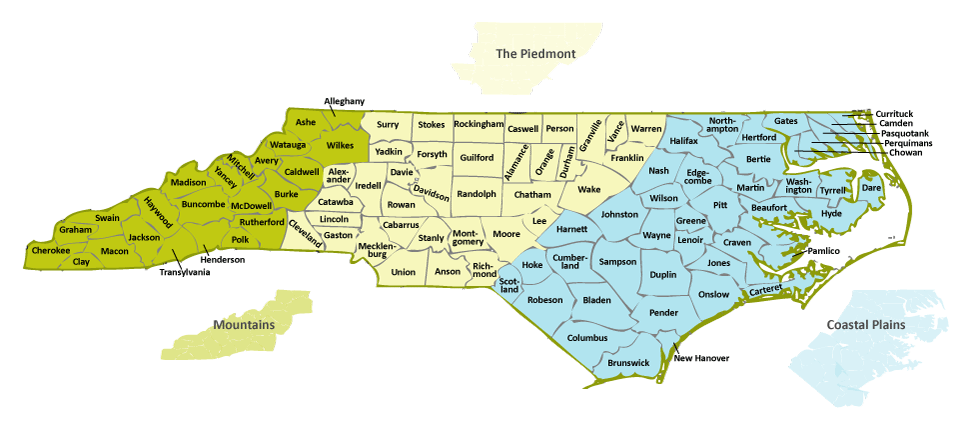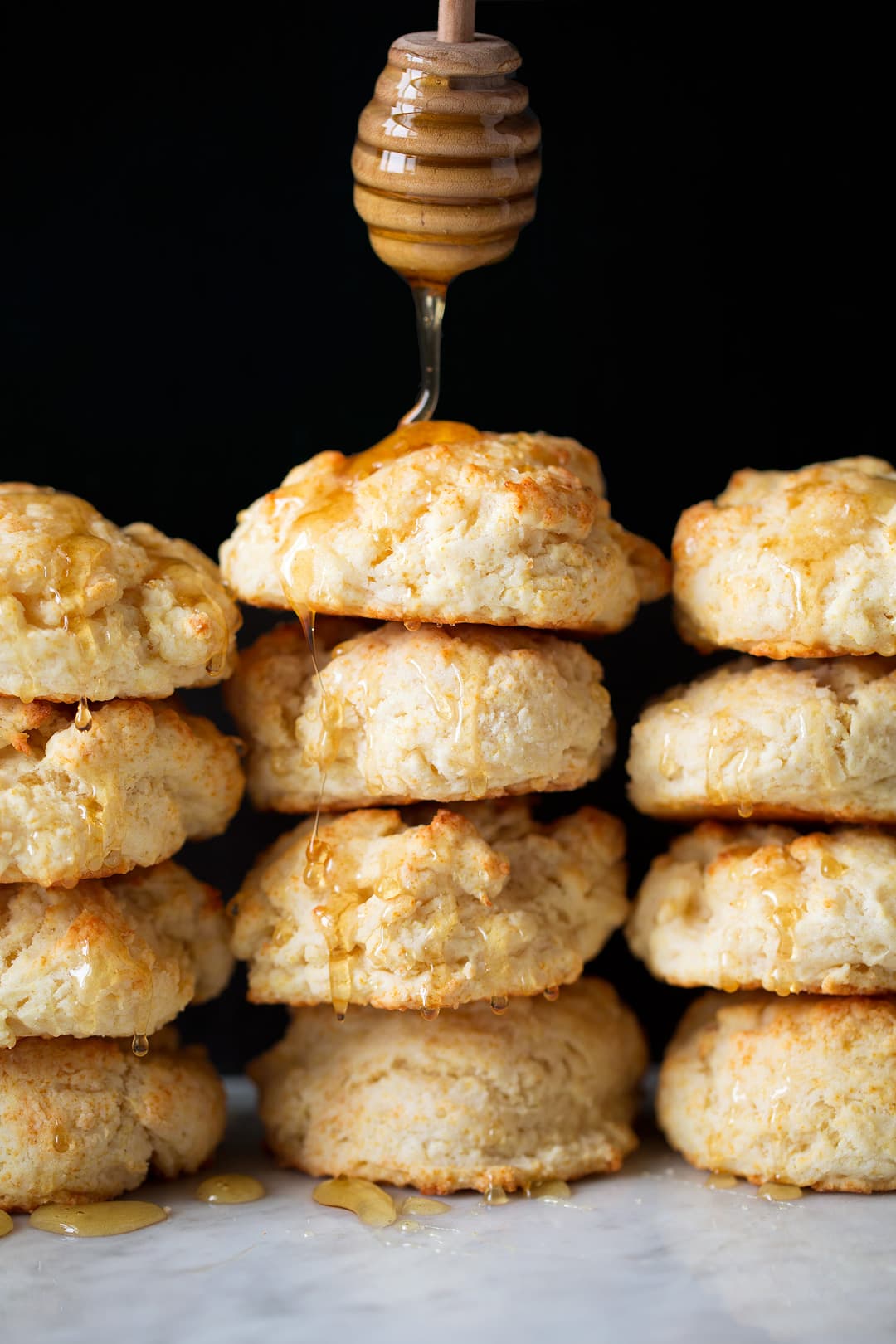Types of NC Honey Varietals
North Carolina is blessed with three distinct geographic regions and a variety of native plants.
We also have a concentration of small farms (87% of NC farms have <441 acres according to the USDA).
All this diversity of native and agricultural land provides a wealth of food sources for humans and nectar sources for honeybees. And honeybees use this nectar to produce honey we enjoy!

Image from NCpedia.org
Honey is a simple food. Bees cure this tasty concoction by mixing the sugary nectar secreted by different flowers with digestive enzymes. Basically, a floral simple syrup. The color, density, aroma, and flavor is determined by the floral source(s) the bees found or chose. Most folks think of 'honey' as a sweet flavor, like honey nut cream cheese or honey barbecue sauce. But there are a wide range of honey flavors available. Even in NC. And most you'll never see in a store.
Honey is Like Wine, Only Sweeter
Wine is a fair comparison to honey on flavor. You could say that you taste wine in a dish (like coq au vin). But you can also distinguish different wine types (merlot vs. chardonnay). Now I don't have the nose or palate to distinguish the flavor notes wine connoisseurs use (like 'hints of black currant" or "bright grassy notes"), but I can tell the difference in sweetness or tartness and flavor profile.
Those same subtleties exist in honey flavors, which is determined by the grapes in wine and by the nectar source in honey. I looked for a list of NC honey varieties but couldn't find an exhaustive list. Most commercial sites mention wildflower, sourwood, and tulip poplar honey. But our state produces much more honey than that. Before we start naming names, let's define some commonly confused terms...
Defining Honey Types: Wildflower vs Varietals
Wildflower Honey
Honey produced from a mix of flower nectars. It's the catchall term beekeepers use to label their honey when 1) they don't know which flowers it came from or 2) if the bees combined a bunch of types of nectar. No individual flower source dominates. So you might have a honey that contains: 30% blackberry, 20% clover, 18% tulip poplar, 8% dandelion, and a million other things. (Bees love weeds). This is common for NC's spring honey. There are a ton of plant sources in bloom and the bees sample a bit of everything. Even though it's a blend of sources, the proportions can vary widely between hives even in the same bee yard. A true melting pot of nectar representing the signature flavor of that hive.
So that's wildflower honey - not a specific variety but a blend of nectar du jour selected by the bees. It's not unique to a locale (every area produces 'wildflower' honey) but then again it's hyper-local since whatever blend the bees make is location specific. Florida wildflower honey will be different than NC or Oregon wildflower honey simply based on what grows in those areas.
Varietal Honey
Honey produced from a single or concentrated flower source. By NC labeling standards, a varietal honey must be 51% or greater in its floral concentration. So if your honey is 57% cotton and 43% miscellaneous and it can be labeled as "Cotton Honey". (Yes! Bees make clothes and honey at the same time. Nice job multitaskers!). Varietal honeys can come from native (gallberry) or agricultural (buckwheat) sources. Because of the limited bloom season, these single source honeys are generally rarer and more expensive than wildflower honey but totally worth it for the gourmet flavors.
Sourwood honey is a great example of a NC native varietal. And our personal favorite because it is unique to NC's southern Appalachian mountains. Sourwood trees are native here (not in Oregon or Arizona) and thus produce a wonderfully distinctive southern food. Pair it with some warm biscuits and you are in hog heaven. Perfect for entertaining foodie friends or gifting a taste of home.

Image by Cooking Classy
How Do You Know What You're Buying?
You read the label, right? Maybe. I'll save my rant on lax honey labeling laws and simply encourage you to buy from a reputable source. If you want a premium product and are paying a premium price, make sure what you receive is worthy of your purchase. Ask questions and get to know your food. Your taste buds will thank you and negate any protests from your wallet. You'll know when you have the good stuff. 'Nuff said.
Is Your Honey Local?
Depending on where you live, both wildflower and varietals might be local to you. The Appalachian foothills have an abundant concentration of sourwood trees. So if you live there, then sourwood honey is local to you. But so is a wildflower blend collected in the same general area. If you're from Florida, you could call orange blossom honey and also wildflower honey 'local'. It comes down to what the bees collected and where the hives were located.
NC Honey Varietals
Here is the list I've comprised of varietal honeys produced in NC. I can't promise you'll find them all for sale. But if you get to know your beekeeper and are looking for those defining ingredients that make good dishes amazing, start here.
Our NC Honey
We offer 2 types of honey: wildflower and NC sourwood.
Our wildflower comes from our three bee yards in Wake and Chatham counties. We are known for our amazingly pure sourwood honey that is an amazing NC indulgence to share with foodie friends, wedding guests, or NC natives. Read our Etsy reviews to get a sense of how unanimously customers love the sourwood honey our girls collect. But our quantities are limited to one harvest per year, so don't wait too long.
I hope this comparison will help you explore and enjoy the many types of honey available in NC. Enjoy!
